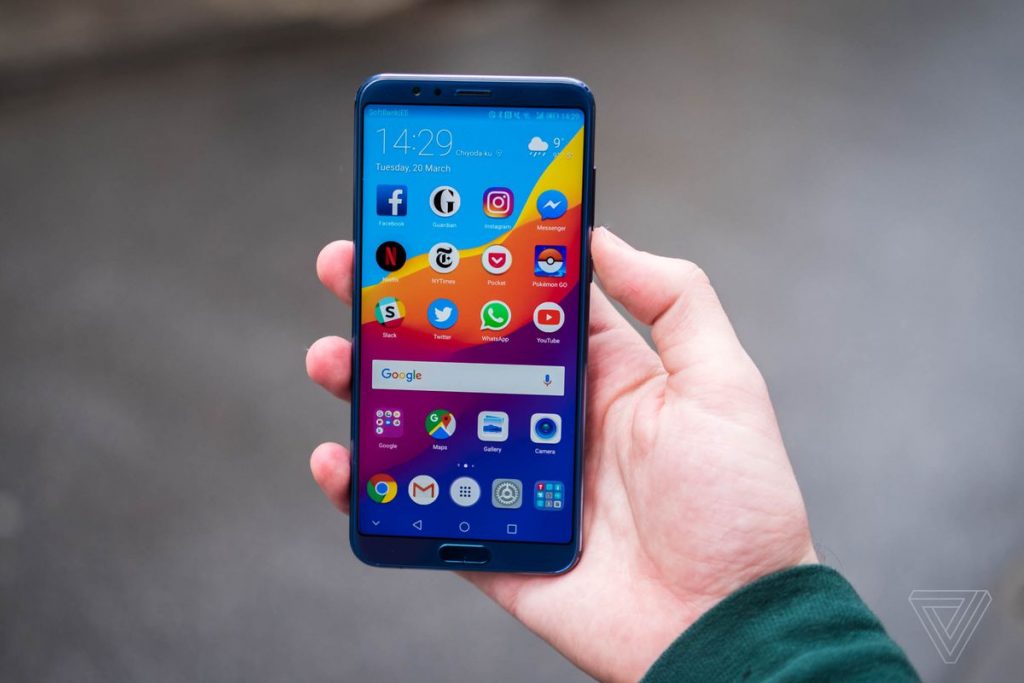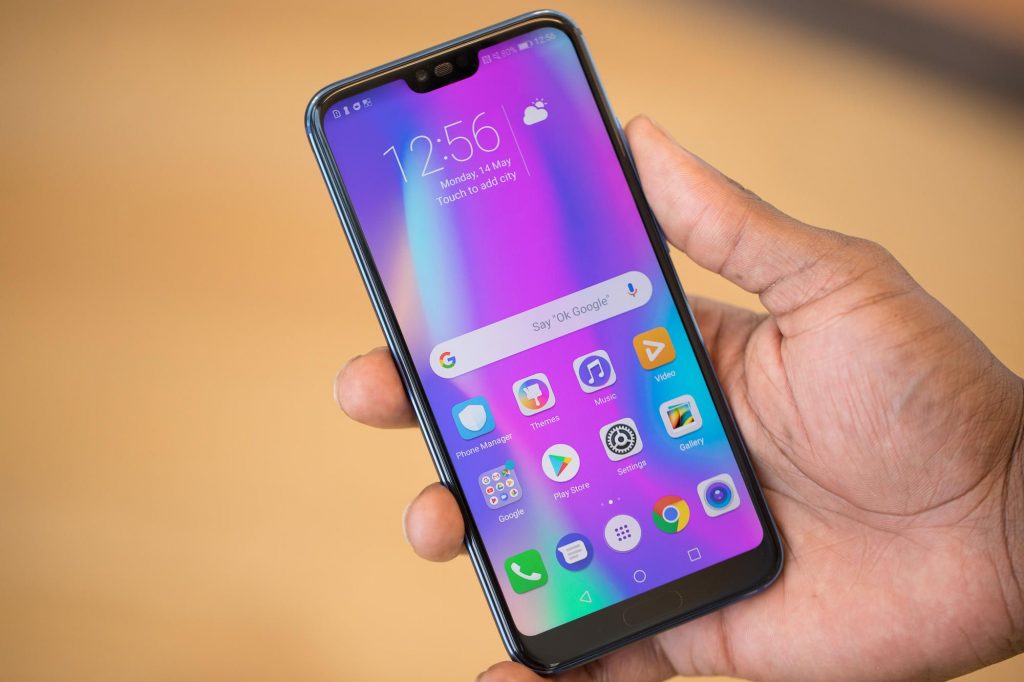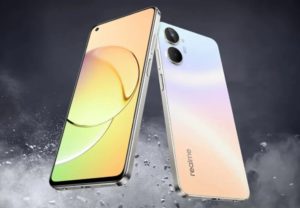Huawei subsidiary Honor brand smartphones are becoming everyone’s favourite smartphone .In fact ,in first half of 2018 Honor has seen good success in India with smartphones such as the Honor 7X and the Honor View10. The Honor 10 which was launched as latest upper midrange phone Priced at Rs 32,999 which succeeds Huawei P20 Lite and the flagship P20 Pro smartphones. The Honor 10 is exclusively available to purchase from Flipkart.
Design and build quality

The Honor 10 is such a good looking phone with gradient deep purple color which shifts from deep purple to royal blue depending on how light is hitting the glass body. The Honor 10 has a notch and a relatively sizable chin with a front-facing fingerprint reader. The Honor 10 shares some similarities with the Huawei P20 Pro, right from specifications to design and more.The in-hand feel of both phones feel very similar.
The most striking aspect of the Honor 10 is its design.It is lot alike as Huawei P20 and P20 Pro but I am not saying its totally rip-off. Honor has done plenty here to ensure that’s not the case. Honor’s choice of colours for the Honor 10, Phantom Blue and Midnight Black, is crazier still. The blue, for your information, is what you should get if you’re looking for lots and lots of attention. The black, meanwhile, is a lot more subdued in comparison.
The addition of a glass back does not bring the wireless charging feature, and it is perfectly fine; the technology isn’t critical for now, to be honest. And like all other smartphones with a glass back, the Honor 10 also suffers from fingerprint smudging, and it is quite slippery too.

On the front, the Honor 10 comes with a notch up top and a chin at the bottom which is dominated giving an aspect ratio of 19:9. If you don’t like the notch, you can disable it from the settings, which will add a black strip on both sides. The screen is a treat to look at. It is bright and color reproduction is quite punchy. The whites are adequately bright, whereas blacks are deep, but it’s not as good as an AMOLED screen.
The bottom bezel, meanwhile, houses a rather unconventional always-on fingerprint scanner. The Honor 10 uses Qualcomm’s ultrasonic fingerprint sensor for biometric authentication. Qualcomm’s ultrasonic solution allows OEMs to implement a fingerprint sensor under display, glass, or metal. hese sensors can also work when wet or greasy, unlike the more conservative sensors seen in phones today.
The face unlock feature, on the other hand, is pretty quick. The setup process is smooth, and it unlocks the smartphone quickly enough.
Camera
The Honor 10 has a dual camera system on the rear consisting of one 16-megapixel colour or RGB sensor and another 24-megapixel monochrome sensor. Both have an aperture of f/1.8 and also there’s PDAF for fast focusing and LED flash. The two cameras work in the same fashion as other dual camera Honor phones. While one sensor takes colour shots, the other takes the same shot in black and white. Together, the cameras capture individual photos and combine them to form one photo with enough details.
Huawei is using AI to let you capture good photos that are sharp, crisp and punchy. The on-device machine learning (ML), thanks to the Kirin 970 SoC and dedicated NPU, is capable of real-time recognition of 500+ scenarios in 22 different categories. For instance, it can recognize pets such as dogs and cats, food, sky, clouds, monuments and more.
Generally, when you hear or read about a smartphone, the marketing campaigns highlight some of its key features, like the chipset, battery life, speed and more. In case of the Honor 10, it is the AI camera that is making the headlines. So for this camera review, I thought of showing how the AI is helping to enhance photos.
There is an option to turn that AI off and unlike the P20 Pro, the Honor 10 gives you a toggle for that on the view finder itself, which is nice. The Honor 10, It is happy to report, is a pretty great camera phone sans all the AI mojo as well. It locks focus quite fast and also it can hold on to it unless you have a fast moving object in front, and then it’s equally fast to take a shot.
Battery
The 3,400mAh battery housed under the hood which Honor 10 holds, and it holds well although it has a tendency to discharge quickly when you play a game continuesly.Using the phone with generalised usage will be able to get at least one day of battery life. The phone supports fast charging and ships with a certified fast charger in the box.
Software, performance and storage

The Honor 10 runs Android 8.1 Oreo out-of-the-box with EMUI 8.1 skin on top. Unlike a few years ago, Huawei has made EMUI more functional while getting rid of bloatware. You still get some pre-installed apps such as Quik video editor, Bing Translator, Huawei App Store and Health app. Other apps such as UC Browser, Messenger, Instagram, Truecaller and Netflix come pre-installed, and if you don’t want them, you can uninstall them.
The Honor 10 bears a passing resemblance to the cheaper Huawei P20 Lite, but its specs are very much similarly high-end as on the flagship P20. In fact, almost identical.
This means the Honor 10 has the top of the line Huawei Kirin 970 processor found in the P20 Pro and Mate 10 Pro. The Mali-G72 GPU is the same as in the P20 line also, along with 4GB and 128GB storage in the UK (other regions will get other configurations with more of both).
Its notable that this storage, though generous, is not expandable. The Honor 9 was, but the change to a very high 128GB is a good trade off – unless you carry all your music around with you, you won’t run out of space for a long time.
Pros
- Nicely looking body, seems sturdy enough
- Great screen with superb contrast, and you can hide the notch
- Very capable main camera, color or monochrome, lots of artsy options
- Dependable performance
- Loud speaker
- Feature-rich software
- Hard to match bang for buck ratio
Cons
- No IP67 rating, don’t dunk it in water
- Mediocre screen contrast in bright light
- Ultrasonic fingerprint reader is slower/fiddlier than we’re used to
- The low-light photos not as good as on P20, nor is the 2x zoom
- Something is wrong with the 1080p at 60fps clips as they come out blurry.





